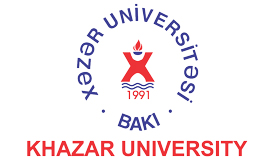International Conference on Materials Science and Research
November 16-18, 2017 Dubai, UAE
Energy Efficiency of Iron-Boron-Silicon Metallic Glasses in Sulfuric Acid Solutions
1Materials Science and Photo-Electronics Lab., Kuwait
2Electrical Engineering Department, Southeast University, China
3Department of Electrical, Electronic and Information Engineering, City University London, United Kingdom
A criterion of the energy efficiency of iron-boron-silicon metallic glasses in sulfuric acid solutions is proposed for the first time (1). The criterion has been derived based on calculating the limit of the ratio value of the conductivity of a metallic glass in aqueous solution to the conductivity of the metallic glass in air. In other words, the conductivity ratio of a metallic glass in aqueous solution to the conductivity of the metallic glass in air =1, was applied to determine the energy efficiency of the metallic glass in the aqueous solution when the conductivity of a metallic glass in air became equal (decreased) to the steady conductivity of the metallic glass in aqueous solution as a function of time of the exposure of the metallic glass to the aqueous solution. This criterion was not only used to determine the energy efficiency of different metallic glasses, but also, the criterion was used to determine the energy efficiency of metallic glasses exposed to a wide range of sulfuric acid concentrations. These conductivity values were determined by the electrochemical impedance spectroscopy (EIS). In addition, the criterion can be applied under diverse test conditions with a predetermined period of the operational life of the metallic glasses as functional materials. Furthermore, variations of the energy efficiency of the metallic glasses as a function of the acid concentration and time were produced by fitting the experimental data to a numerical model using a nonlinear regression method. The profiles of the metallic glasses exhibit a less conservative behavior of the energy efficiency than the proposed analytical criterion.
Keywords: Energyefficiency; Metallic glasses; Conductivity; Electrochemical impedance spectroscopy; Electrical power consumption; and Sulfuric acid.
References: K Habib, W Jiang, B M A Rahman, and K T V Grattan,”Energy efficiency of iron∇boron∇silicon metallic glasses in sulfuric acid solutions”,Materials Research Express. February 2017, accepted in press.
DOI: 10.1088/2053-1591/aa60dc



